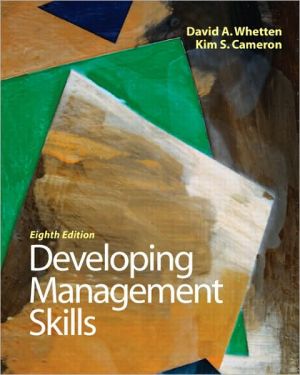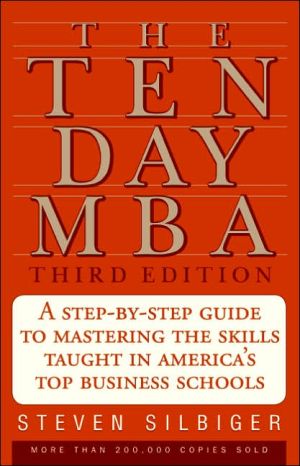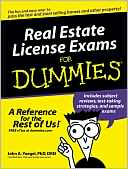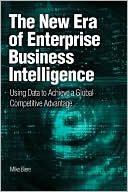Developing Management Skills
Develop ten essential management skills. \ With an emphasis on self assessments, Developing Management Skills gets readers involved in the learning experience, helping them connect the theories to their own lives. Further, this text focuses on developing the ten essential skills needed for success and gives readers tangible goals to work towards.\ Based on suggestions from reviewers, instructors, and students, a number of changes–including new skill-assessments and cases, and updated...
Search in google:
This textbook aims to bridge the gap between the conceptual understanding of management skills and their actual application to specific jobs. Each chapter outlines a five-step process for assessing, learning, analyzing, practicing, and applying management skills and building the foundations for effective practice. Covering personal, interpersonal, and group skills, the book provides a cross- cultural perspective of self-awareness, stress management, problem solving, coaching, counseling, communicating, gaining power, motivating others, managing conflict, delegating responsibility, and building teams. Whetten teaches at Brigham Young University. Cameron teaches at the University of Michigan. Annotation c. Book News, Inc., Portland, OR (booknews.com)
Preface \ Preparing to Meet the Challenges of the New Millennium\ As you prepare for managerial careers in the new millennium, the environment that you will face will undoubtedly be very different from the one managers faced a decade ago, or the one facing you as you read this preface. In response, each of the business disciplines is equipping their students with new tools and techniques. Accounting and operations management majors learn how computing power has given them the ability to analyze financial information that provides new insights into operational and financial performance. Finance majors learn to appreciate the latest trading techniques in derivative markets. Human resource majors are learning how to assess programs and strategize how a planned global expansion will affect an organization's human resource needs. Marketing majors learn how scanner data can be analyzed so that they can better understand customer needs and preferences.\ To complement this ever-expanding business tool kit, the objective of a management skills course is to prepare students to manage dynamic, constantly changing work environments—the kind that challenge individuals to continually adapt by learning new methods and adopting new goals. Specifically, it prepares future managers to address questions like: "How do I get my people to accept this new approach?," "How do I explain the need to change to my `old-timers' without creating a defensive reaction?," "How do I help the `survivors' of a downsizing manage with their sense of loss, grief, and guilt?," and "How do I use existing organizational rewards to reinforce the need for change?"\ In other words, the businesspressures that spawned countless waves of reengineering, six-sigma quality efforts, downsizing, and speed-to-market initiatives have also increased the need for managers with outstanding "people skills." Their unusual ability to communicate, to motivate, to make decisions, to resolve conflicts, etc., acts as a sort of "management glue" that helps organizations that are undergoing seemingly endless change from splintering apart.\ Will Rogers's dictum that "common sense ain't necessarily common practice" underscores the problem with most content-based discussions of management. It is one thing to catalogue the "best practices" associated with world-class quality, efficiency, or customer satisfactions. It is far more challenging to prepare the members of an organization to accept the need for change, to help them understand the new approach, to obtain their commitment to implement the proposal, to manage the transition period effectively, and to institutionalize the new approach by "hard wiring" it into the organization's communication, evaluation, and reward systems. As one experienced manager noted, "Good ideas are not in scarce supply. What is rare is the ability to translate a good idea into accepted practice."\ The goal of this book is to provide current and prospective managers with the personal, interpersonal, and group skills necessary to reduce the gap between good ideas and accepted practice. Managers can hire content knowledge, but they cannot hire stand-ins to represent them in critical staff meetings, conversations with angry customers, scheduling discussions with their secretaries, counseling sessions with troubled employees, or performance evaluations. Skillful performance in these settings has been documented by literally dozens of studies (see the Introduction that immediately follows this Preface) as the essential and indispensable foundation of effective management practice.\ Background of this Book\ It has been nearly two decades since we became convinced that management skills need to be a crucial part of the business school and corporate training curricula. Not only does a well-known study of business school education (Porter and McKibbin, 1988) corroborate that view, but our experience with business school students and managers in executive education seminars has continually reaffirmed our commitment to the skill development approach.\ Originally, the motivation for writing Developing Management Skills grew out of our frustration with teaching management courses following conventional methods. When we used texts based on the traditional "principles of management" framework, we felt uncomfortable with their lack of theoretical and research grounding. Because principles of management have been generally derived from recollections and interpretations of practicing managers, empirical research and theory regarding their validity in modern organizations is limited.\ When we used an "organization and management theory approach," students complained that the practical relevance of the material was difficult to discern. Not enough "hows" were included to be useful to students who aspired to be practicing managers.\ When we used a traditional "organizational behavior" approach, colleagues teaching the elective organizational behavior courses reported that students complained about redundancy. It became increasingly difficult to differentiate among topics covered by organizational behavior and management courses.\ When we emphasized the "experiential learning" approach, centered around simulations, case discussions, and games, students complained they weren't gaining enough substantive knowledge about how to be effective managers. Few students brought enough practical experience, theoretical knowledge, or self-analytic skills to those exercises to get much benefit from them. As a result, the exercises were entertaining but not very educational.\ After years of experimentation, we determined that while each approach had its place in the management curriculum and each could contribute to a student's education, none, taken alone, could help students develop into competent managers.\ In our search for alternatives, we asked recent graduates and senior executives to evaluate their organizational behavior and management education in terms of their experiences as managers. In general, they criticized behavioral science courses for not teaching them job-relevant skills.\ They were acutely aware of the challenges posed by "people problems" in their work, and they felt that their university education had not prepared them for that component of their job.\ Based on this feedback, we began formulating a new teaching methodology by examining how skills-based courses in education, social work, engineering, medicine, and law are taught. We also drew heavily on recent innovations in training programs for practicing managers that emphasize behavior modification through role modeling. To identify the appropriate content for a management skills course, we surveyed over 400 managers in public and private organizations and combed the professional literature for statements by management experts regarding the characteristics of effective managers. As our teaching model began to evolve, it became apparent that a supporting textbook would need to be developed.\ Early in this project it was clear that our text would be at variance with prevailing views regarding what behavioral science courses should offer management students. Typically, these courses either present an array of general principles and concepts derived from research in industrial/organizational psychology, sociology, OB, industrial administration, and so on, or they rely heavily on group exercises, games, or cases to illustrate certain management activities or functions. They either describe management practice and provide students with theories for analyzing common problems encountered by managers, or they eschew theory and research in favor of activity and involvement. Through our experience we became convinced that the strengths of each approach, used in combination, were needed for students to develop (not just know about) management skills. Therefore, the hallmark of this text is a balanced integration of theory and practice, understanding and application.\ A Note to Teachers\ Most of us are aware of a significant shift in the conversations about "good teaching" on our campuses. We are hearing less and less about improving teaching ("observe the best classroom performers and then reproduce their techniques and/or style") and more and more about improving student learning ("figure out what knowledge, skills, and attitudes your students need and then focus all aspects of the course on those outcomes").\ We recently took a look at what authorities have said on the subject of student learning. Here's a sampler.\ "Students learn what they care about, and remember what they understand" (Ericksen, 1984:51).\ "All genuine learning is active, not passive. It is a process of discovery in which the student is the main agent, not the teacher" (Adler, 1982).\ "Learning is not a spectator sport. Students do not learn much just by sitting in a class listening to teachers, memorizing pre-packaged assignments, and spitting out answers. They must talk about what they are learning, write about it, relate it to past experiences, apply it to their daily lives. They must make what they learn part of themselves" (Chickering and Gamson, 1987:3).\ Central to the increasing emphasis on student learning is the clarion call for more emphasis on "active learning." What exactly is active learning? In their classic book on this topic, Bonwell and Eison (1991) list seven characteristics of the active learning classroom (pp. 1-2):\ \ Students are involved in more than passive listening.\ Students are engaged in activities (e.g., reading, discussing, writing).\ There is less emphasis placed on information transmission and greater emphasis placed on developing student skills.\ There is greater emphasis placed on the exploration of attitudes and values.\ Student motivation is increased, especially in adult learners.\ Students receive immediate feedback from their instructor and peers.\ Students are involved in higher order thinking (analysis, synthesis, evaluation).\ \ In brief, active learning involves "learning by doing." This is a pedagogical tradition with a long and distinguished heritage. For example, in the 5th century B.C., Sophocles observed, "One must learn by doing the thing, for though you think you know it—you have no certainty until you try."\ So why is active learning still viewed as the exception to the rule on college campuses? Bonwell and Eison (1991) list six commonly mentioned barriers to adopting this approach (pp. 5364):\ \ You cannot cover as much course content in the time available.\ Devising active learning strategies takes too much pre-class preparation.\ Large class size prevents implementation of active learning strategies.\ Most instructors think of themselves as being good lecturers.\ There is a lack of materials or equipment needed to support active learning approaches.\ Students often resist non-lecture approaches.\ \ Given this formidable set of obstacles, it is easy to understand why many professors find it difficult to fully embrace the notion of active learning in their particular university classroom. In contrast, it is gratifying to frequently receive positive reports from countless colleagues who've used the skill development approach outlined in this text to make their courses more student focused and more outcome focused.\ If you are new to this approach, we recommend that you carefully examine the five step skill development learning model described in the Introduction (immediately after the Preface), the list of teaching and learning supplements at the end of this Preface, and the suggestions for course design in Section 1 in the Instructor's Manual, to get a better understanding of how you can achieve the objectives of active, student-centered learning in your management course. In addition, the Prentice Hall Web site for our book contains a number of additional support tools that are worth exploring.\ Organization of the Material\ The purpose of this book is to help practicing managers and management students develop the skills necessary to cultivate and implement good ideas in organizations. Based on years of research and personal observation of effective managers, we have identified nine fundamental management skills, organized into three categories. Each chapter in this book addresses one of these skills.\ \ Personal\ Developing Self-Awareness\ Managing Personal Stress\ Solving Problems Analytically and Creatively\ Interpersonal\ Coaching, Counseling, and Supportive Communication\ Gaining Power and Influence\ Motivating Others\ Managing Conflict\ Group Skills\ Empowering and Delegating\ Building Effective Teams and Teamwork\ \ In addition to these core skills chapters, we have included three "supplements" focusing on specific, applied communications skills: "Making Written and Oral Presentations," "Conducting Interviews," and "Conducting Meetings."\ The shift from learning management principles to developing management skills requires an associated shift in learning objectives. The goal of purely cognitive or content-oriented learning is understanding. In contrast, the goal of skill development is application. The goal of "changing my mind" is replaced with the goal of "changing my behavior." This qualitative shift in learning objectives requires an entirely new system of learning—one that focuses less on facilitating comprehension and more on enabling change. As noted in the following table, there is a close parallel between the five step learning model used to organize the skill development process in each chapter and the widely-recognized requirements for sustainable behavioral change.\ Requirements for Change\ Accept the need to change\ Understand what/how to change\ Commit to and practice/pilot change\ Apply and monitor change\ Skill Development Steps\ Skill Assessment\ Skill Learning and Skill Analysis\ Skill Practice\ Skill Application\ Objectives for this Edition\ Our primary objectives in preparing this edition were to (1) bring a stronger multi-cultural perspective to the skill development process; (2) streamline and simplify the conceptual material throughout the book and significantly alter the approach used in a couple of chapters; (3) update examples, cases, and exercises; (4) continue improving the quality of the accompanying Instructor's Manual; and (4) make available new supplemental teaching materials. We are confident that adopters familiar with previous editions will recognize improvements in these areas. The following are some highlights of the changes you will notice in this edition:\ \ Added a multi-cultural perspective - In the Self Awareness chapter we included a new section on cultural values. This theme is continued throughout the book. We believe this additional perspective will enrich classroom discussions and improve actual skill practice.\ Improved the organization of the conceptual material - Although the basic framework in each chapter has not been substantially altered, the presentation of the supporting material has been modified in several chapters. In addition, the Team Building chapter and the Conducting Meetings supplement have been substantially revised.\ Updated examples, cases, and exercises - This is a continuous process, from edition to edition, punctuated with a few major changes in this edition. For example, we replaced the DeLorean case in the Power and Influence chapter and we added the Kolb Learning Style Inventory to the Self Awareness chapter.\ Upgraded the Instructor's Manual\ Added new supplements\ \ Supplements\ To augment the improvements in the text, the supplements have been revised and improved as well. The available supplements include:\ \ Instructor's Manual - This revised manual features the following components:\ \ \ Extensive overview of course philosophy\ Section on organizing and designing a skill-building course\ Sample course outlines and general guidelines for teaching the course\ Suggestions for conducting role plays\ Several new application exercises and activities for each chapter in the text\ \ \ Test Item File - Features a variety of multiple-choice, scenario/application, and essay questions for each chapter and includes levels of difficulty and section headings for easy reference.\ Instructor's Resource CD-ROM with electronic Instructor's Manual, Win/PH Test Manager, and PowerPoint Electronic Transparencies - Containing all of the questions in the printed Test Item File, Test Manager allows educators to create and distribute tests for their courses easily, either by printing and distributing through traditional methods or by online delivery via a Local Area Network (LAN) server. The PowerPoint transparencies, a comprehensive package of text outlines and figures corresponding to the text, are designed to aid the educator and supplement in-class lectures.\ Overhead Color Transparencies - Approximately 100 of the most critical PowerPoint electronic transparencies are chosen for inclusion in this package as full-color acetates and are provided on high quality Mylar.\ New Part-Ending Skills Video Segments - These new segments, featuring key Management Skills topics, focus on a fictional Internet company. Each segment offers a scenario with two options, from which students select and evaluate their choices.\ myPHLIP Web site - The new myPHLIP provides professors with a customized course Web site including new communication tools, one-click navigation of chapter content, and great PHLIP resources such as Current Events and Internet Exercises. It also features an online Study Guide for students.\ Student Skills Guide - This Guide allows students to both tailor what they learn to their own needs and be more productive in the learning process. Updated from the fourth edition Self-Directed Manual, it is available in both print and electronic version.\
PrefaceIntroduction1Pt. IPersonal Skills411Developing Self-Awareness432Managing Personal Stress973Solving Problems Analytically and Creatively155Pt. IIInterpersonal Skills2094Coaching, Counseling, and Supportive Communication2115Gaining Power and Influence2516Motivating Others3017Managing Conflict347Pt. IIIGroup Skills4038Empowering and Delegating4059Building Effective Teams and Teamwork451Pt. IVSpecific Communication Skills493Supplement AMaking Oral and Written Presentations495Supplement BConducting Interviews523Supplement CConducting Meetings545App. I: Scoring Keys and Supplemental Materials558App. II: Glossary611App. III: References619Name Index637Subject Index640Combined Index646







